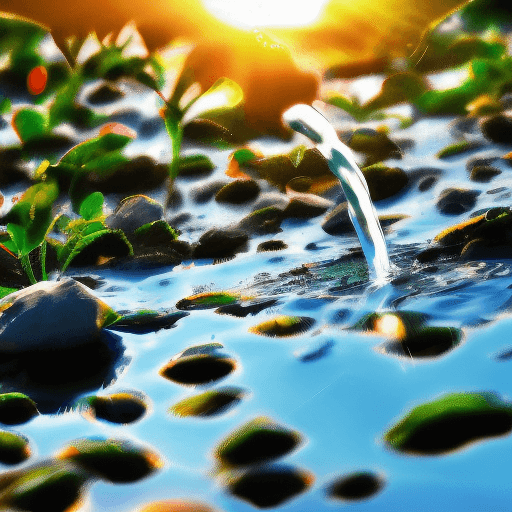Did you know that you can make your own sun water at home?
It’s really easy how to make sun water, and all you need is a few simple ingredients.
In this blog post, we will teach you how to make sun water using just a few simple steps.

Sun water is water that has been exposed to the sun.
- To make sun water, fill a clear glass bowl or jar with distilled or spring water.
- Place the bowl or jar in direct sunlight for 3-4 hours, or until the water is warmed by the sun.
- Stir the water occasionally during this time.
- Once the sun water is made, it can be stored in a cool, dark place for up to 2 weeks.
A simple process on how to make sun water
The process of making sun water is simple and only requires a few materials. First, fill a clean glass jar with clean water. Next, place the jar in direct sunlight for at least three hours. Finally, strain the water through a coffee filter or cheesecloth to remove any impurities.
What are the ingredients to make sun water?
Many people are interested in making their own sun water but are unsure of where to start. Here is a simple recipe for those who are just beginning to experiment with this age-old water purification method.
The first step is to find a clean, glass container. If you are using a jar, make sure that it has a wide mouth for easy filling. Once you have your container, rinse it out with clean water and set it in the sun.
The next step is to fill the container with water from a safe source, such as distilled or spring water. Be sure to leave enough room at the top of the container for the water to expand as it heats up.

Finally, add a small amount of salt to the water. This will help to absorb impurities and speed up the purification process. Place the lid on the container and allow it to sit in direct sunlight for at least six hours.
After this time, your sun water will be ready to use. Simply pour it into a clean container for storage.
Materials needed to make sun water
For those just getting started with solar water production, there are a few key materials that you will need.

First, you will need a water container to hold the water that will be heated by the sun. A black plastic container is a good option, as it will absorb more heat than a clear one.
You will also need something to act as a solar collector. A sheet of black glass or metal will work well for this.
Finally, you will need a way to connect the collector to the container. This can be done with a length of black tubing or hose.
With these materials in hand, you are ready to start harnessing the power of the sun to produce hot water.
How to use sun water
Sun water can be used in a number of ways.

One common use is to water plants and gardens. Sun water is also often used in pools and hot tubs.
It can also be used to clean windows and cars. Finally, sun water can be distilled and used as drinking water. While there are many uses for sun water, it is important to remember that it should not be used for cooking or bathing, as it may contain harmful bacteria.
When using sun water, always take precautions to ensure that it is safe for its intended purpose.
Tips for making the most of your sun water
Making the most of your sun water doesn’t have to be difficult.
Here are a few tips to help you get started:
Start by collecting rainwater in a barrel or other container.
This will provide you with a ready supply of water that you can use for watering plants or filling a pool or spa.
If you live in an area with hard water, consider using a water softener to make the most of your sun water. This will help to remove minerals and other impurities that can cause problems for plants and people.
Be sure to check the pH level of your sun water before using it.
This will ensure that it is safe for plants and won’t cause any damage to your lawn or garden.
Making sun water is a fun and easy way to enjoy the benefits of solar power. Give it a try today!
Article Sources
Jacks of Science sources the most authoritative, trustworthy, and highly recognized institutions for our article research. Learn more about our Editorial Teams process and diligence in verifying the accuracy of every article we publish.
